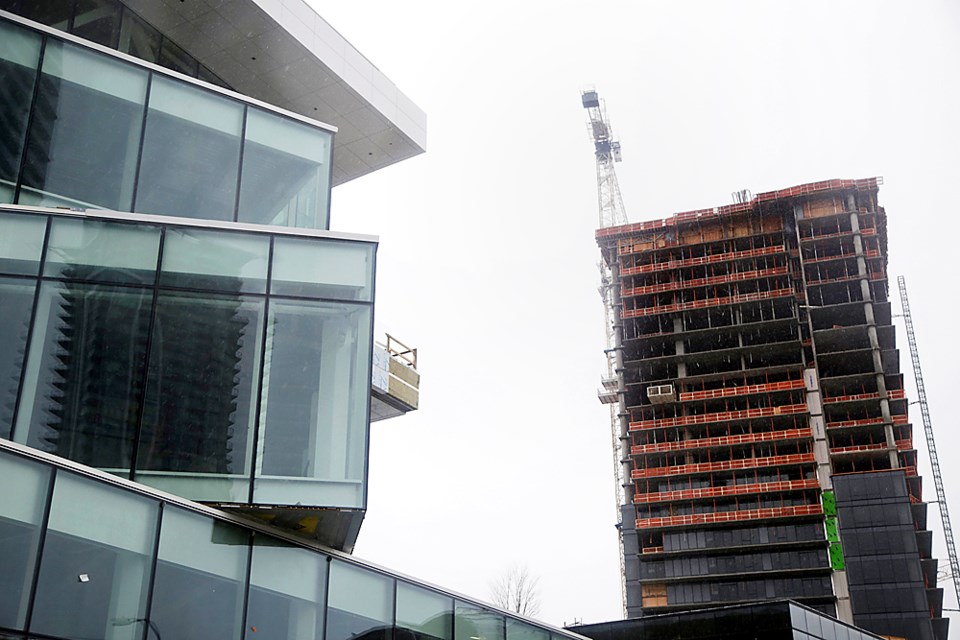Burnaby’s top cop and fire chief are calling for a bylaw that will ensure their radios work properly in the city’s big new highrises.
The design and materials going into shiny new apartment towers – including rebar, metal studs, metal-coated insulation and low emissivity glass – impede digital radio signals used by police, firefighters and ambulance personnel responding to emergencies, according to a report presented at the city’s public safety committee recently.
“The digital frequency works well until attenuation occurs, but when the signal strength decreases to a certain point it reaches what is known as the ‘digital cliff’ and the radio signal is lost,” states the report.
That happened to Burnaby firefighters just over a year ago as they were fighting an intense blaze in the underground parkade of a condo tower under construction at 4567 Lougheed Hwy. in Brentwood.
“Communication, we had none,” Burnaby fire Chief Joe Robertson told the NOW. “That was extremely dangerous for our people. It’s part of what we do, but, in that particular case, if you needed help and you couldn’t communicate, that’s where we have a real problem.”
Big towers can also create an impenetrable barrier for radio signals (called a “building shadow”) if they happen to be between a portable radio carried by a police officer or firefighter and a base radio.
“It typically prevents any communication in these shadowed areas,” states the report. “Digital radios were not being used by emergency responders when the current stock of buildings were being designed and constructed, so these challenges were not known or widely anticipated at the time.”
Signed by Robertson and Burnaby RCMP Chief Supt. Deanne Burleigh, the report says the situation is especially dangerous for firefighters and police officers, “who rely on their portable radios as a lifeline,” but it also poses a threat to public safety in emergency situations.
The report calls on the city to develop a bylaw that would require emergency radio amplification systems to be installed in certain types of new and renovated buildings.
Such systems are not required under the B.C. Building Code.
Currently none of Burnaby’s 201 highrises have radio amplification systems.
They cost between $70,000 and $100,000 to install in a building 30 storeys or higher with four or five underground floors.
The bylaw proposed by Robertson and Burleigh would not require retrofits on existing buildings unless they were undergoing a major renovation.
“The application of bylaw requirements at the building phase for new construction will create the least financial impact for development while ensuring adequate communications for first responders in the future,” states the report.
That being said, Robertson would like to see the city approach builders after the bylaw is passed to request they voluntarily install amplification systems in towers already under construction.
The fire chief said about 100 new highrises will go up in Burnaby over the next 10 years.
Four B.C. municipalities already have emergency radio amplification bylaws on the books (Surrey, Port Coquitlam, Port Moody and the Township of Langley), while Vancouver is in the process of creating one.
White Rock and North Vancouver don’t have bylaws but include radio amplification in their development process.



